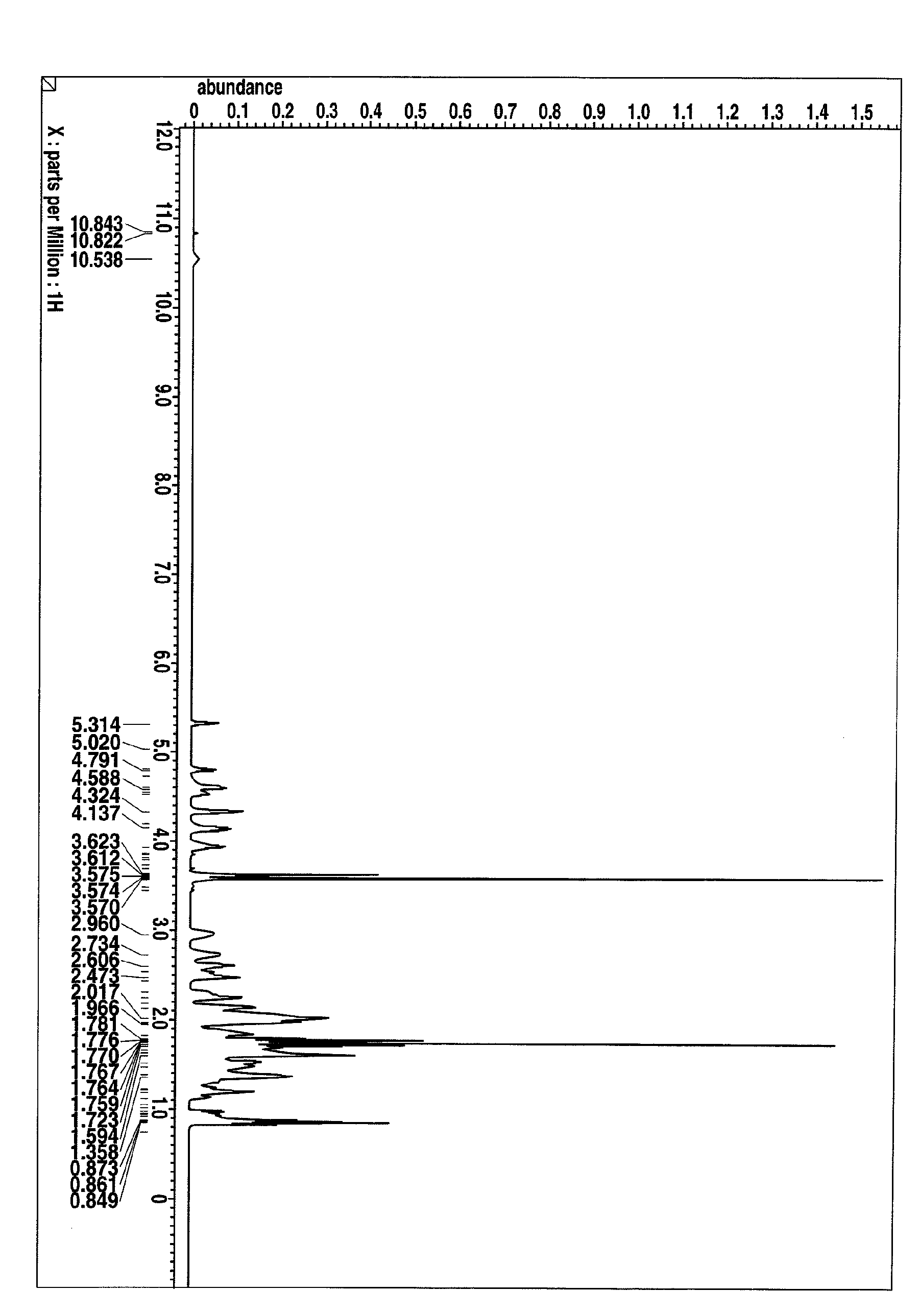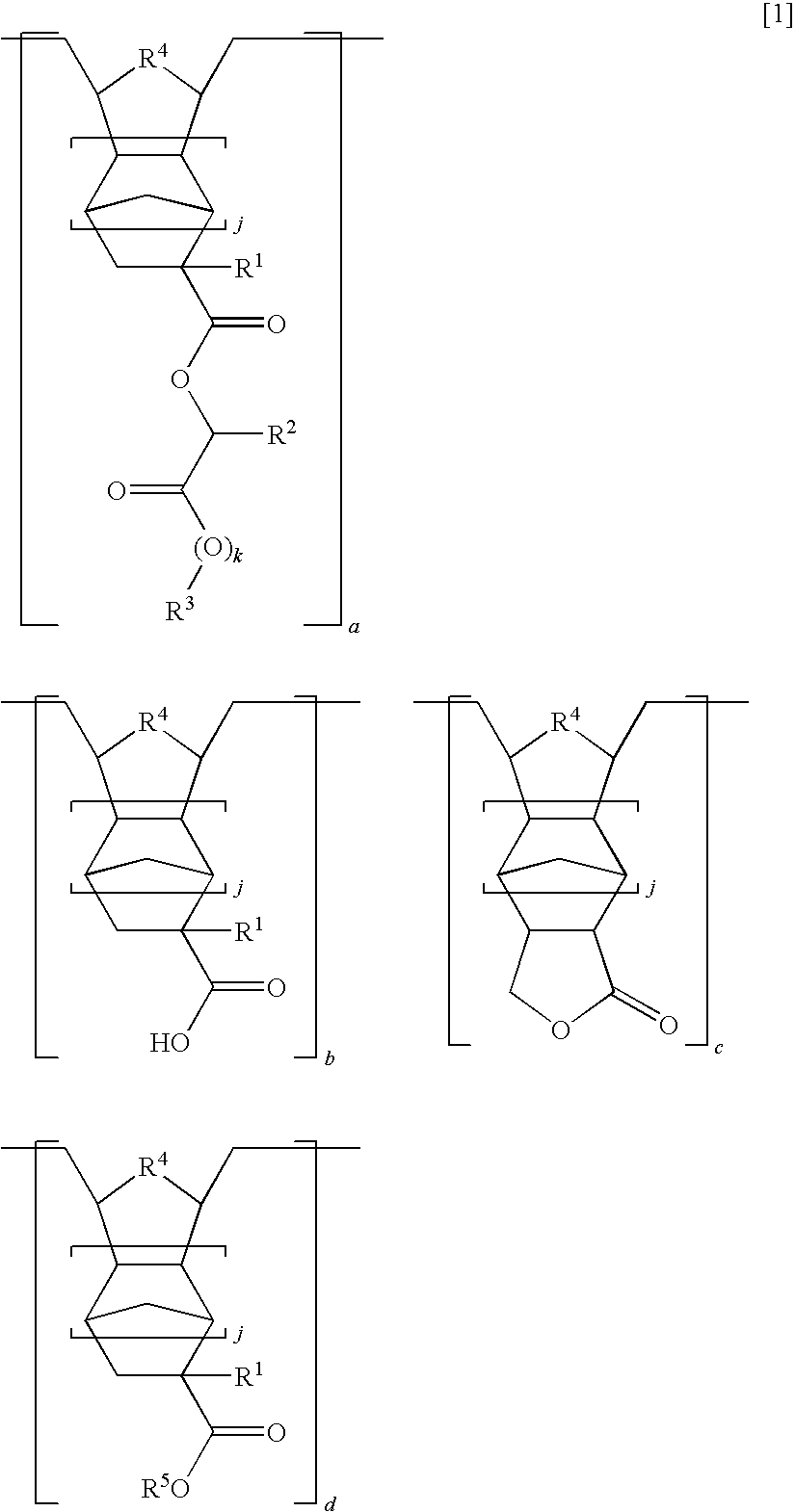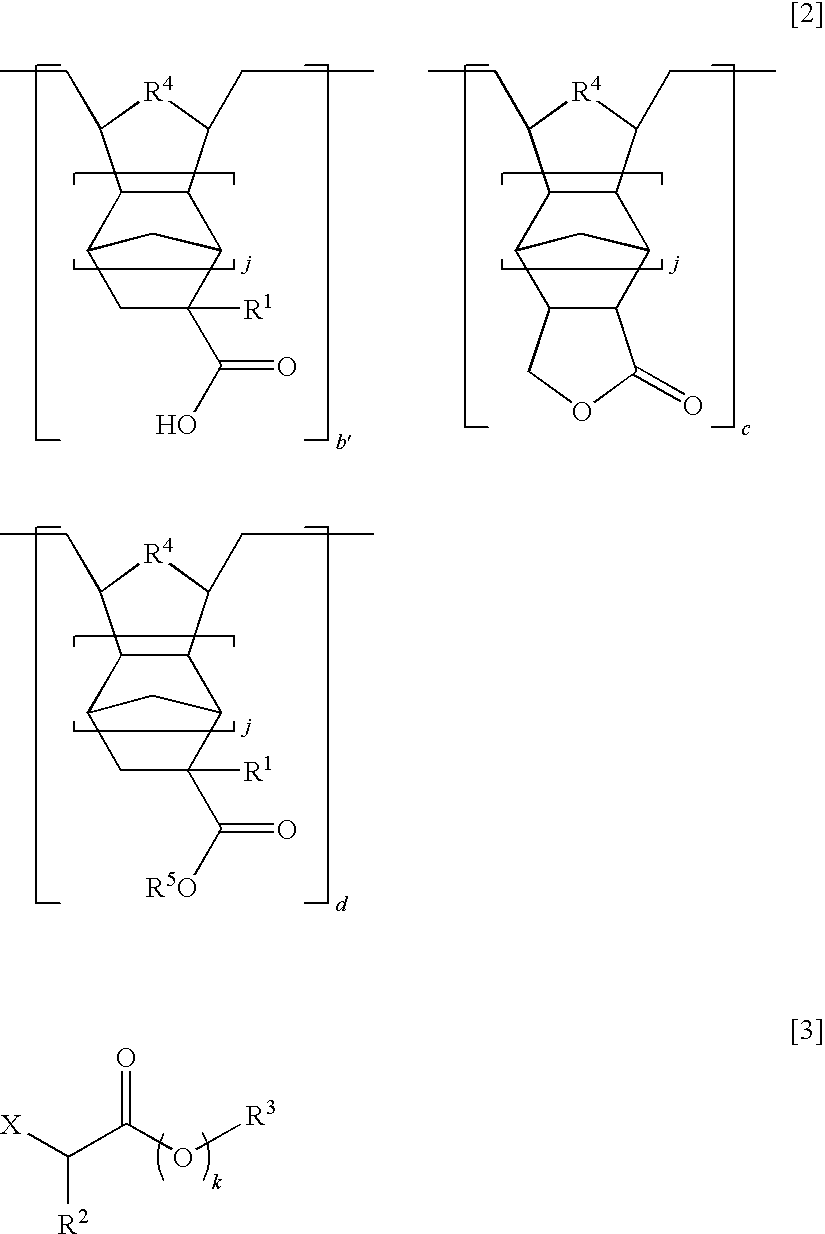Polymer, polymer preparation method, resist composition and patterning process
a technology of applied in the field of polymer preparation method, polymer preparation method, resist composition and patterning process, can solve the problem that polymers of analogous structure are very difficult to manufacture in an industrial environment, and achieve the effect of efficient preparation
- Summary
- Abstract
- Description
- Claims
- Application Information
AI Technical Summary
Benefits of technology
Problems solved by technology
Method used
Image
Examples
example 1
Synthesis of Polymer P-1
[0621]A mixture of 10.0 g of a polymer (P-0, Mw=8,860, Mw / Mn=1.93), 1.13 g of an alkylating agent (AA-1), 0.98 g of triethylamine, and 40.0 g of N,N-dimethylformamide was heated and stirred at 60° C. for 24 hours. The reaction mixture was cooled, and the excess of triethylamine was neutralized with hydrochloric acid. This was followed by standard aqueous work-up and concentration, obtaining a crude polymer. A solution of the crude polymer in tetrahydrofuran was added to ultrapure water whereupon the polymer precipitated. Subsequent filtration, water washing and vacuum drying yielded 10.5 g of Polymer P-1 (yield 96%). On GPC analysis, the polymer had a weight average molecular weight Mw of 9,040 and a dispersity Mw / Mn of 1.89. FIG. 1 shows a 1H-NMR spectrum (600 MHz, deuterated THF) of the polymer.
[0622]
examples 2 to 8
Synthesis of Polymers P-2 to P-8
[0623]Polymers P-2 to P-8 were synthesized by the same procedure as in Example 1 aside from using the starting polymer and alkylating agent shown in Table 1.
[0624]
TABLE 1Yield,StartingAlkylatingExamplePolymer%MWMnpolymeragent2P-2949,2401.90SP-1AA-23P-3979,2401.90SP-1AA-34P-4949,1301.89SP-1AA-45P-5999,0001.89SP-2AA-16P-6979,1401.99SP-2AA-37P-7929,5502.03SP-3AA-58P-8958,0902.06SP-4AA-6(P-2)(P-3)(P-4)(P-5)(P-6)(P-7)(P-8)(SP-2)(SP-3)(SP-4)(AA-2)(AA-3)(AA-4)(AA-5)(AA-6)
[0625]Resist compositions were formulated using the inventive polymers as the base resin and examined for resist properties.
examples i-1 to i-8
and Comparative Examples II-1 to II-3
[0626]Resist compositions were prepared by using inventive polymers (P-1 to P-8) or comparative polymers (CP-1 to CP-3, shown below) as the base resin, and dissolving the polymer, an acid generator and a basic compound in a solvent in accordance with the formulation shown in Tables 2 and 3. These compositions were each filtered through a Teflon® filter with a pore diameter of 0.2 μm, thereby giving resist solutions.
[0627]
[0628]These resist solutions were spin-coated onto silicon wafers having an antireflective coating (ARC29A by Nissan Chemical Industries, Ltd.) of 78 nm thick coated thereon, then baked at 100° C. to 130° C. for 60 seconds to give resist films having a thickness of 250 nm. The resist films were exposed using an ArF excimer laser stepper (Nikon Corporation, NA 0.68), then baked (PEB) at 100° C. to 130° C. for 60 seconds, and puddle developed for 60 seconds with an aqueous solution of 2.38% tetramethylammonium hydroxide (TMAH), the...
PUM
| Property | Measurement | Unit |
|---|---|---|
| boiling point | aaaaa | aaaaa |
| time | aaaaa | aaaaa |
| temperature | aaaaa | aaaaa |
Abstract
Description
Claims
Application Information
 Login to View More
Login to View More - R&D
- Intellectual Property
- Life Sciences
- Materials
- Tech Scout
- Unparalleled Data Quality
- Higher Quality Content
- 60% Fewer Hallucinations
Browse by: Latest US Patents, China's latest patents, Technical Efficacy Thesaurus, Application Domain, Technology Topic, Popular Technical Reports.
© 2025 PatSnap. All rights reserved.Legal|Privacy policy|Modern Slavery Act Transparency Statement|Sitemap|About US| Contact US: help@patsnap.com



